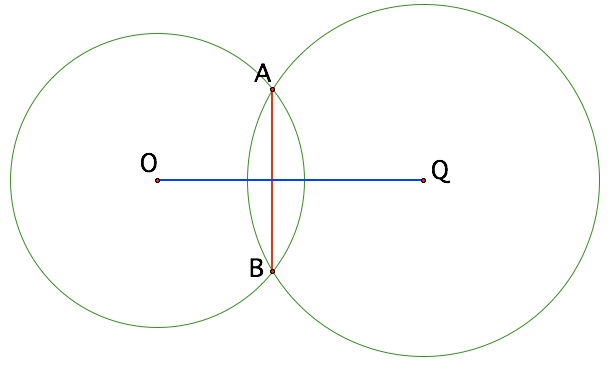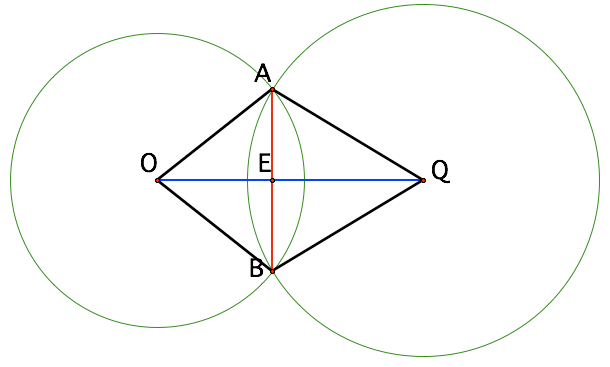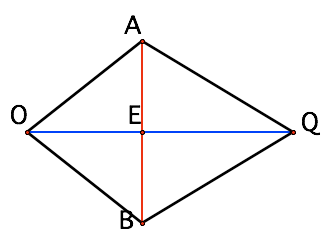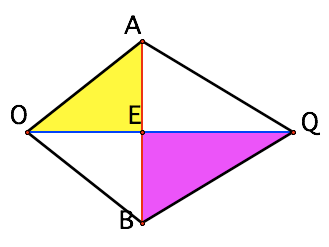| |||
| Math Central | Quandaries & Queries |
|
Question from Michelle, a student: I've looked all over and cannot find out how to solve this problem. Two overlapping circles O and Q have the common chord AB (vertical line between the overlapping circles). If AB is 6 and circle O has a radius of length 4 (horizontal line going through the overlapping circles and touching the side of the circle) and circle Q has a radius of length 6, how long is OQ. I would appreciate any help on this problem. Thanks. |
We have two responses for you
Hi Michelle,
C is the intersection of the line segments AB and OQ. By the symmetry C is the midpoint of AB and the angles ACO and QCA are right angles.

Since triangles AQC and ACO are right triangles you can use Pythagoras' theorem to find the lengths of QC and CO.
Penny
One good way to do this type of problem is to shift your attention.
You start with:

Draw in the radii: OA, OB, QA,QB all of which you know.

If you drop the circles you can then focus on the two isosceles triangles

Note that E splits the chord AB so you know AE, EB. OQ is also perpendicular to AB.
You have enough lengths now, and some right angle triangles, so you can compute OE and EQ!

The key is shifting your attention towards the triangles: putting in the known pieces, then extracting the triangles.
Walter Whiteley
Michelle wrote back
Walter:
Thanks for your prompt reply. Regarding this question, the answer is square root of 7 + 3 square root of 3 - which is how long OQ according to the answer in the back of the textbook. My question is how did they come up with that answer?
I used the Pythagoream Theory and I don't come up with that answer. If line OQ is made up of length 4 for Circle O and length 6 for circle Q so instead of 4 and 6 being the one of the legs but more of one base would that help in figuring out this answer? It helps to drop out the circles out of the problem and refocus.
Totally appreciate the quick response. You guys are awesome and your website is helping me with my circle exam on Monday night.
Sincerely,
Michelle
Thanks for the compliment Michelle.
Look at Walter's final diagram. QB is a radius of the circle centered at Q so the length of QB is 6. Since E splits the chord AB the length of EB is 3. Thus you know the lengths of two sides of the right triangle and by using the Pythagorian theorem you can find the length of the third side EQ. In a similar way you can find the length of OE.
Is this what you tried? If you didn't get √7 + 3√3 what did you get?
Penny
 |
||
Math Central is supported by the University of Regina and The Pacific Institute for the Mathematical Sciences.